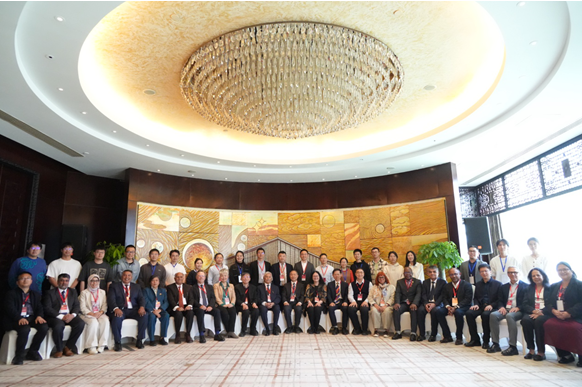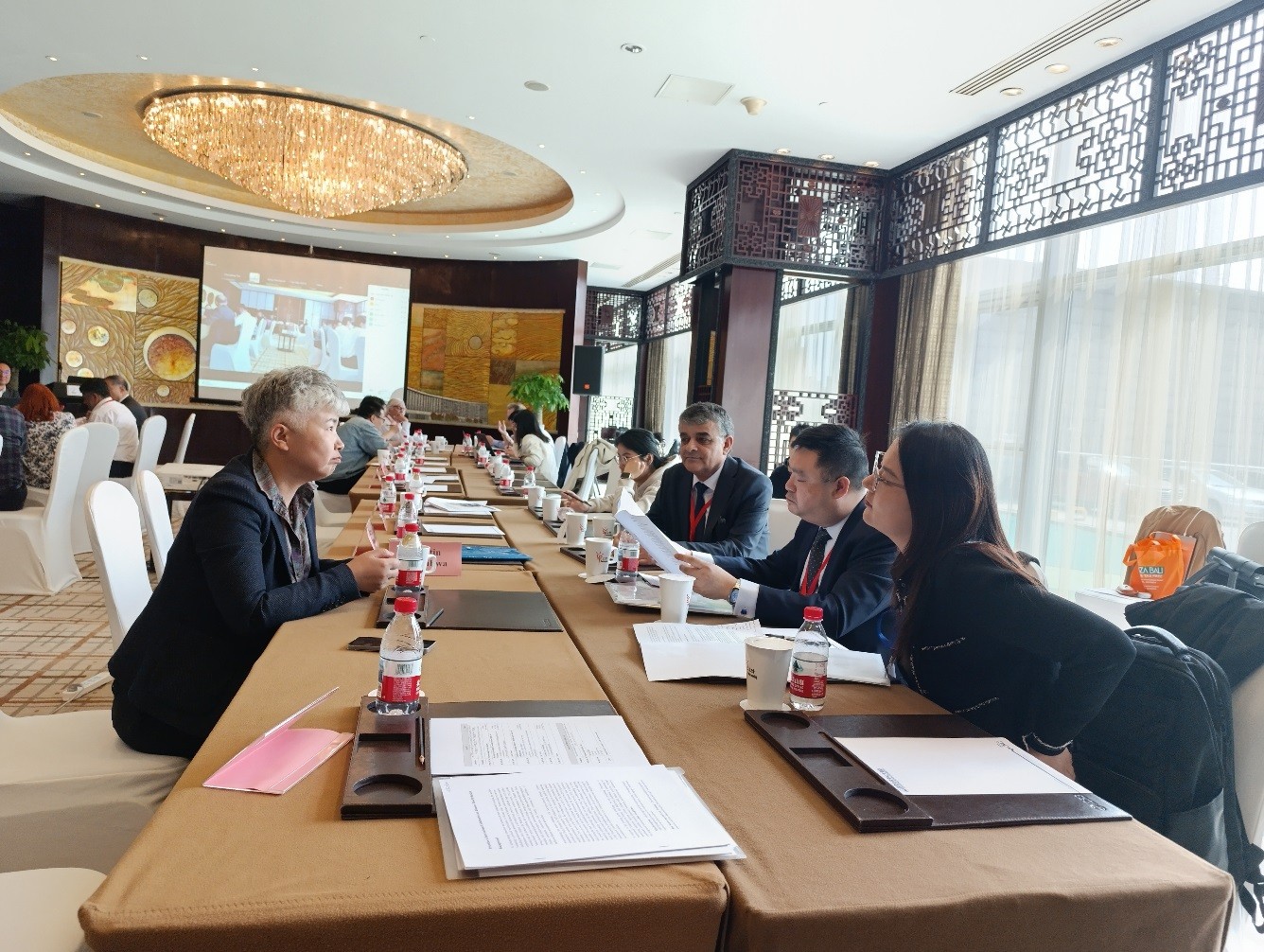Co-Director of the Research Center for Ecology and Environment of Central Asia (Dushanbe), Corresponding Member of the National Academy of Sciences of Tajikistan Saidov Abdusattor Samadovich took part in the Second meeting of the ANSO-DRR Steering Committee on April 7-8, 2025, in Beijing. He is a member of the ANSO-DRR Steering Committee. The meeting discussed strategic directions for disaster risk reduction for the next 5 years.
The meeting was attended by more than 30 leading experts from 15 countries, including China, Pakistan, Tajikistan, Nepal, India, Malaysia, Indonesia, Philippines, New Zealand, Hungary, Italy, Zimbabwe, United States, United Kingdom and Japan, representing International organizations such as the United Nations Educational, Scientific and Cultural Organization (UNESCO), World Federation of Engineering Organizations (WFEO), International Center for Integrated Mountain Development (ICIMOD), South Asian Alliance of Disaster Research Institutions (SAADRI), Federation of African Engineering Organizations (FAEO), etc.
The meeting was chaired by Academician of the Chinese Academy of Sciences, Professor Cui Peng and Professor Gretchen Kalonji.
The meeting was opened by the Co-chair of ANSO-DRR, Professor Gretchen Kalonji, who introduced the participants to the goals and objectives of the organized meeting. Professor Kang Shichang made a welcoming speech on behalf of the ANSO-DRR Secretariat.
Academician Cui Peng presented a report on the activities of ANSO-DRR over the past 5 years. In his speech, he summarized the progress made in the field of international scientific and technical cooperation on disaster risk reduction and outlined the priority tasks for the next 5 years, including monitoring and early warning of disaster risk, building resilience and building the capacity of young scientists.
Speaking at the meeting, A.S. Saidov presented information on the activities of the Research Center for Ecology and Environment of Central Asia (Dushanbe) in the field of disaster risk monitoring in Tajikistan. He noted that the country's territory plays a key role in the formation of water resources in Central Asia. More than 60% of the total flow of the Amu Darya River basin is formed within Tajikistan. At the same time, water-related natural events such as floods, inundations, and landslides periodically occur in the republic, causing significant economic damage.
Since 2018, the Research Center for Ecology and Environment of Central Asia (Dushanbe), in cooperation with the Xinjiang Institute of Ecology and Geography of the Chinese Academy of Sciences, the Committee for Emergency Situations and Civil Defense under the Government of the Republic of Tajikistan, has been conducting disaster risk assessment in Tajikistan using modern technologies.

Currently, the Center has installed 7 modern digital stations in the area of Lake Sarez to track deformation processes using the Chinese satellite communication technology BeiDou. The data of these stations are of great practical importance for taking timely measures to prevent natural disasters associated with seismic activity. It should be noted that the high-altitude Lake Sarez, which is of dam origin, was formed in 1911 as a result of a powerful earthquake with a magnitude of 7.4. The lake is located in an area of high seismic activity, and the assessment of its safety requires constant monitoring.
In order to reduce the risk and prevent avalanches, the Center has installed 6 avalanche control and observation stations on the Dushanbe-Khujand highway using modern digital technologies. Currently, these stations operate in real time, and the data are promptly transmitted to the Committee for Emergency Situations and Civil Defense under the Government of the Republic of Tajikistan.

At the meeting, Saidov A.S. proposed to develop regional cooperation in the field of monitoring and prevention of the risk of natural disasters occurring on mountain transboundary highways connecting the countries of Central Asia - Tajikistan, China, Uzbekistan, Kazakhstan and Kyrgyzstan. These transport corridors are of great economic importance within the framework of the Silk Road initiative, and ensuring their security requires joint efforts and the use of modern technologies.
During the meeting, there was an in-depth discussion of the future directions of ANSO-DRR's activities, with a focus on four key strategic priorities: an in-depth understanding of disaster risk; the development of effective early warning systems; improving the resilience of infrastructure; and the development of education and training programs aimed at disaster risk reduction. Participants reached a consensus on the need to strengthen the integration of resources and introduce innovative mechanisms to strengthen global resilience to natural disasters.
At the end of the meeting, the ANSO-DRR concept note was adopted, which emphasizes that natural disasters have a devastating impact on social and economic development, public health and the state of ecosystems around the world. This negative impact is exacerbated by global climate change. It was emphasized that many countries participating in the Belt and Road Initiative remain particularly vulnerable to the consequences of natural disasters. In this regard, ANSO-DRR considers disaster risk reduction as one of the key tasks for the sustainable development of regions. The concept note pays special attention to the implementation of UN international agreements, including the 2030 Agenda for Sustainable Development, the Paris Climate Agreement, as well as the Sendai Framework for Disaster Risk Reduction 2015-2030.

ANSO-DRR intends to establish closer cooperation between the leading scientific communities working in the field of natural disasters and emergencies in the fields of health, engineering, natural and social sciences. Particular attention is paid to the regular organization of international research forums in partnership with other organizations aimed at bringing together key actors involved in disaster risk reduction. One of the priorities of ANSO-DRR is also to support partners and scientific networks by improving access to information on research funding opportunities, as well as developing effective mechanisms for joint response and disaster risk reduction.
